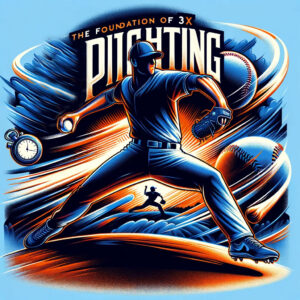 Are you ready to learn and apply the Foundations of 3X Pitching? This article is your guide!
Are you ready to learn and apply the Foundations of 3X Pitching? This article is your guide!
The world of baseball coaching is continuously evolving, with new methodologies and techniques emerging to help players reach their full potential. Among these, the Foundations of 3X Pitching stands out as a transformative program for coaches aiming to enhance their players' pitching mechanics and overall performance. This certification is designed to provide coaches with a deep understanding of pitching mechanics, drills to address common issues, and programming techniques to optimize player performance. The ultimate goal is to create a new generation of pitchers who are not only effective on the mound but also less prone to injuries.
History and Evolution of 3X Pitching: Foundations of 3X Pitching
The Foundations of 3X Pitching emerged from a critical need within the baseball community: the necessity for an evidence-based approach to pitching techniques. Historically, pitching training often relied on traditional methods that lacked scientific validation, leading to a high incidence of injuries among pitchers. Recognizing this gap, Brent Pourciau, a former professional pitcher who overcame his own career-threatening injury, sought to develop a program grounded in rigorous scientific principles.
The inception of Foundations of 3X Pitching can be traced back to the early 2000s when Pourciau began researching the biomechanics of pitching extensively. Drawing from his personal experiences and academic studies in kinesiology, he aimed to create a program that not only improved performance but also significantly reduced injury risks. This initiative was driven by the alarming rate of shoulder and elbow injuries plaguing pitchers at all levels of the sport.
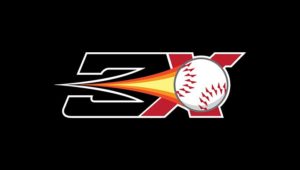 The 3X Pitching program has significantly evolved over the years, with several significant turning points:
The 3X Pitching program has significantly evolved over the years, with several significant turning points:
- Integration of Biomechanics and Sports Science: The foundations of 3X Pitching lies in its use of biomechanical analysis. By understanding the physics and physiology behind the pitching motion, the program provides insights into the most efficient and safe ways to pitch. This scientific approach was a departure from traditional coaching methods, emphasizing data and evidence over anecdotal techniques.
- Development of Advanced Diagnostic Tools: One of the major advancements in the foundations of 3X Pitching was the incorporation of state-of-the-art diagnostic tools. These tools, including motion capture technology and high-speed video analysis, allow coaches to scrutinize every aspect of a pitcher's mechanics. Such detailed analysis helps in identifying specific mechanical flaws that could lead to injury or performance issues.
- Creation of Specialized Drills: To address the mechanical issues identified through advanced diagnostics, the 3X Pitching program developed a series of specialized drills. These drills are designed to target specific areas of a pitcher's motion, such as improving hip rotation, enhancing core stability, and optimizing arm path. Scientific research supports each drill, ensuring that it effectively contributes to improved performance and injury prevention.
- Comprehensive Certification Program for Coaches: Recognizing the need to disseminate this knowledge broadly, Brent Pourciau established a detailed certification program for coaches. The 3X Pitching Certification equips coaches with the tools and knowledge necessary to implement the program's techniques effectively. This certification ensures that coaches are well-versed in the latest research and methodologies, promoting a standardized approach to pitching training across the baseball community.
- Continuous Research and Adaptation: The foundations of 3X Pitching is ongoing, with continuous research and adaptation. As new findings in sports science and biomechanics emerge, the program incorporates these insights to refine and enhance its techniques. This commitment to staying at the forefront of scientific research ensures that 3X Pitching remains a cutting-edge training program.
The journey of the foundations of 3X Pitching from its inception to its current state highlights a commitment to scientific rigor and innovation. By addressing the critical issues of performance and injury prevention through a structured, evidence-based approach, 3X Pitching has revolutionized how pitchers train and perform. This evolution reflects a broader trend in sports where data-driven methods are increasingly replacing traditional practices, ultimately leading to safer and more effective athletic training.
Principles of 3X Pitching: Foundations of 3X Pitching
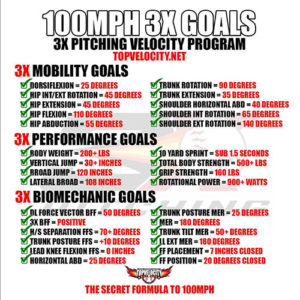 The 3X Pitching program is founded on several core principles that set it apart from traditional pitching training methods. These principles are deeply rooted in biomechanics and sports science, focusing on the intricate details of the pitching motion to maximize efficiency and minimize the risk of injury. The following outlines the essential principles that form the backbone of the foundations of 3X Pitching methodology:
The 3X Pitching program is founded on several core principles that set it apart from traditional pitching training methods. These principles are deeply rooted in biomechanics and sports science, focusing on the intricate details of the pitching motion to maximize efficiency and minimize the risk of injury. The following outlines the essential principles that form the backbone of the foundations of 3X Pitching methodology:
- Biomechanics and Kinetic Chain Integration: At the core of the foundations of 3X Pitching is the principle of biomechanics, which involves understanding the mechanical laws relating to movement. The program emphasizes the kinetic chain, the concept that all parts of the body are interconnected and must work together harmoniously to produce optimal results. In pitching, this means that the legs, core, and upper body must function in a coordinated manner. Proper integration of the kinetic chain ensures that energy generated from the lower body is efficiently transferred through the torso and into the arm, culminating in a powerful and controlled pitch.
- Proper Body Mechanics: One of the fundamental principles of 3X Pitching is teaching pitchers the correct body mechanics. This involves precise positioning and movement patterns that reduce unnecessary strain on joints and muscles. Key aspects include maintaining a balanced stance, achieving proper hip and shoulder separation, and ensuring a smooth follow-through. Proper mechanics are crucial for both performance enhancement and injury prevention.
- Strength Training: Strength training is a critical component of the 3X Pitching program. Unlike traditional pitching programs that may focus solely on the arm, 3X Pitching incorporates full-body strength training. Building strength in the legs, core, and upper body enhances overall stability and power, allowing pitchers to generate more velocity while maintaining control. Strength training exercises are carefully selected to support the specific demands of pitching, such as explosive movements and rotational power.
- Flexibility and Mobility: Flexibility and mobility are emphasized to ensure that pitchers can achieve the necessary range of motion for an effective pitch. Tight muscles and restricted joints can lead to compensatory movements that increase the risk of injury. The 3X Pitching program includes dynamic stretching routines, mobility drills, and flexibility exercises designed to keep the body agile and ready for the high demands of pitching.
- Balance and Coordination: Balance and coordination are essential for maintaining stability throughout the pitching motion. The program incorporates drills that improve proprioception (the body's ability to sense movement and position) and dynamic balance. These drills help pitchers maintain control over their movements, reducing the likelihood of errors and enhancing overall performance.
- Efficient Energy Transfer: Efficient energy transfer is a key principle that focuses on minimizing energy leaks during the pitching motion. This involves ensuring that the energy generated from the lower body is effectively transmitted through the core and upper body to the pitching arm. By optimizing this energy transfer, pitchers can achieve greater velocity and accuracy with less effort, reducing the risk of fatigue-related injuries.
- Mental and Psychological Preparedness: The mental aspect of pitching is also addressed in the 3X Pitching program. Mental toughness, focus, and psychological resilience are essential for pitchers to perform consistently under pressure. The program includes techniques for mental conditioning, such as visualization, goal setting, and stress management, to help pitchers maintain a competitive edge.
- Continuous Assessment and Adaptation: Continuous assessment and adaptation are integral to the 3X Pitching philosophy. The program encourages regular evaluation of a pitcher's mechanics, strength, and flexibility to identify areas for improvement. By continually adapting the training regimen based on these assessments, coaches can ensure that their players are always progressing and minimizing the risk of plateauing or regressing.
- Injury Prevention: Injury prevention is a central focus of the 3X Pitching program. By adhering to the principles of proper mechanics, strength training, and flexibility, pitchers can significantly reduce their risk of common injuries such as rotator cuff tears, elbow tendinitis, and shoulder impingement. The program also includes recovery protocols and maintenance exercises to keep pitchers healthy throughout their careers.
In summary, the principles of 3X Pitching provide a comprehensive and scientifically-backed framework for developing elite pitchers. By focusing on biomechanics, strength, flexibility, balance, and mental preparedness, the program not only enhances performance but also ensures long-term health and sustainability for pitchers at all levels.
Identifying Mechanical Issues: Foundations of 3X Pitching
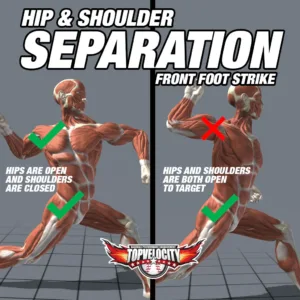 Identifying mechanical issues is a cornerstone of the 3X Pitching Certification program. This skill is crucial for coaches aiming to enhance a pitcher's performance and reduce the risk of injury. Mechanical issues in pitching can range from subtle inefficiencies to significant flaws that affect both the effectiveness and safety of the pitch. Here, we delve into the common mechanical issues, the tools and techniques used to identify them, and how understanding these issues leads to effective correction strategies.
Identifying mechanical issues is a cornerstone of the 3X Pitching Certification program. This skill is crucial for coaches aiming to enhance a pitcher's performance and reduce the risk of injury. Mechanical issues in pitching can range from subtle inefficiencies to significant flaws that affect both the effectiveness and safety of the pitch. Here, we delve into the common mechanical issues, the tools and techniques used to identify them, and how understanding these issues leads to effective correction strategies.
Common Mechanical Issues
- Improper Arm Angles: One of the most frequent mechanical issues involves improper arm angles. This can manifest as a pitcher's arm being too high, too low, or deviating from the optimal path during the throwing motion. Incorrect arm angles can lead to a loss of velocity, reduced accuracy, and increased strain on the shoulder and elbow, heightening the risk of injuries such as rotator cuff tears or elbow tendinitis.
- Inefficient Use of Counter Movements: Properly using counter movements like hip to shoulder separation and forward trunk tilt to maximum external rotation is essential for generating power and maintaining balance during the pitching motion. Inefficiencies in these movements can disrupt the kinetic chain, leading to energy leaks and reduced pitch effectiveness. For example, inadequate hip to shoulder separation can result in decreased torque and reduced pitch velocity, while improper forward trunk tilt can limit the force transferred to the ball, impacting accuracy and speed.
- Inefficient Use of the Lower Body: The lower body plays a significant role in generating power and stability in the pitching motion. Common issues include inadequate push-off from the mound, poor hip rotation, and insufficient engagement of the core muscles. Inefficient use of the lower body can lead to over-reliance on the arm, increasing the risk of arm fatigue and injury while also limiting pitch velocity and control.
Tools and Techniques for Identification
 Video Analysis: Video analysis is one of the most effective tools for identifying mechanical issues. By recording a pitcher's motion from multiple angles, coaches can slow down the footage to closely examine each phase of the delivery. This allows for detailed observation of arm angles, counter movements, and lower body mechanics. Video analysis provides a visual aid that helps both coaches and pitchers understand the specific areas that need improvement.
Video Analysis: Video analysis is one of the most effective tools for identifying mechanical issues. By recording a pitcher's motion from multiple angles, coaches can slow down the footage to closely examine each phase of the delivery. This allows for detailed observation of arm angles, counter movements, and lower body mechanics. Video analysis provides a visual aid that helps both coaches and pitchers understand the specific areas that need improvement.- Motion Capture Technology: Motion capture technology takes video analysis a step further by using markers and sensors to track the precise movements of a pitcher's body. This technology generates detailed data on joint angles, velocities, and timing, offering a comprehensive view of the pitching mechanics. Motion capture can identify subtle inefficiencies that might not be visible to the naked eye, providing a scientific basis for diagnosing mechanical flaws.
- Biomechanical Assessments: Biomechanical assessments involve a combination of physical examinations and diagnostic tests to evaluate a pitcher's range of motion, strength, and flexibility. These assessments can identify physical limitations or imbalances that contribute to mechanical issues. For example, restricted shoulder mobility might lead to improper arm angles, while weak core muscles can result in inefficient use of counter movements.
- Feedback from Wearable Technology: Wearable technology, such as smart sleeves or wristbands, can provide real-time feedback on a pitcher's mechanics. These devices measure metrics like arm speed, shoulder rotation, and force exerted during the pitch. The data collected helps coaches monitor a pitcher's mechanics during training sessions and make immediate adjustments as needed.
Developing Targeted Correction Strategies
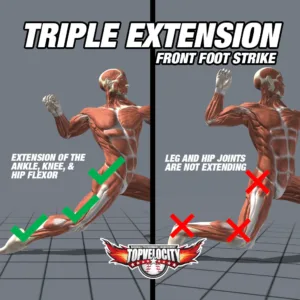 Once mechanical issues have been identified, the next step is to develop targeted strategies to correct them. The 3X Pitching Certification equips coaches with a variety of drills and exercises tailored to address specific mechanical flaws.
Once mechanical issues have been identified, the next step is to develop targeted strategies to correct them. The 3X Pitching Certification equips coaches with a variety of drills and exercises tailored to address specific mechanical flaws.
- Drills for Arm Angles: To correct improper arm angles, coaches can use drills that emphasize proper arm path and release point. For instance, "shadow drills," where pitchers mimic their throwing motion without a ball, can help them focus on maintaining the correct arm angle throughout the delivery.
- Counter Movement Training: Improving counter movements such as hip to shoulder separation and forward trunk tilt requires specialized tools and exercises. The Trunk Excelerator can be used to enhance trunk rotation and tilt. Additionally, 3X Med Ball drills help improve hip rotation and core stability, while also reinforcing proper sequencing of the kinetic chain. These tools and drills ensure that pitchers can maximize their torque and power during the pitching motion.
- Lower Body Strength and Coordination: To address inefficient use of the lower body, strength training and coordination drills are essential. The Stride Excelerator and the TopV training tools are specifically designed to improve lower body mechanics, ensuring a powerful push-off and optimal hip rotation. Incorporating Olympic lifting into the strength and conditioning program further enhances lower body strength and overall athleticism, providing a solid foundation for the pitching motion.
Continuous Monitoring and Adaptation
Identifying and correcting mechanical issues is an ongoing process. Continuous monitoring through video analysis, motion capture, and biomechanical assessments ensures that any regressions or new issues are promptly addressed. This adaptive approach allows coaches to refine their strategies and maintain optimal pitching mechanics over time.
In conclusion, the ability to identify mechanical issues is a vital skill taught in the 3X Pitching Certification program. By using advanced tools and techniques, coaches can accurately diagnose and address mechanical flaws, leading to improved performance and reduced injury risk for their pitchers. This comprehensive approach ensures that pitchers can achieve their full potential while maintaining their health and longevity in the sport.
Programming for Performance
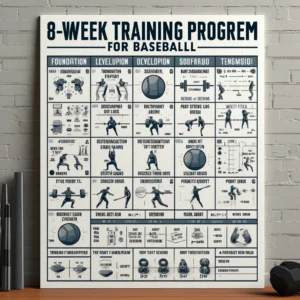 Effective training programs are crucial for maximizing a pitcher's performance and longevity in the sport. The 3X Pitching Certification emphasizes the importance of individualized training programs tailored to the unique needs of each player. This personalized approach ensures that every aspect of a pitcher's development is addressed, from physical conditioning to skill refinement, ultimately leading to optimal performance and reduced injury risk.
Effective training programs are crucial for maximizing a pitcher's performance and longevity in the sport. The 3X Pitching Certification emphasizes the importance of individualized training programs tailored to the unique needs of each player. This personalized approach ensures that every aspect of a pitcher's development is addressed, from physical conditioning to skill refinement, ultimately leading to optimal performance and reduced injury risk.
Importance of Individualized Training Programs
Each pitcher has a unique set of strengths, weaknesses, and physical attributes that must be considered when designing a training program. An individualized approach allows coaches to focus on specific areas that need improvement while building on the pitcher's existing strengths. The 3X Pitching Certification provides coaches with the tools and knowledge to create these customized programs, ensuring that each pitcher can reach their full potential.
Components of an Effective Training Program
- Strength Training: Strength training is a fundamental component of the 3X Pitching program. A well-rounded strength training regimen focuses on developing the muscles involved in pitching, particularly the legs, core, and upper body. This not only enhances the pitcher's power and velocity but also improves overall stability and control. The program includes exercises such as squats, deadlifts, and Olympic lifts, which are essential for building explosive strength and endurance.
- Flexibility and Mobility Exercises: Flexibility and mobility are critical for achieving the necessary range of motion in the pitching delivery. Tight muscles and restricted joints can lead to compensatory movements that increase the risk of injury. The 3X Pitching program incorporates dynamic stretching routines, mobility drills, and flexibility exercises designed to keep the body agile and ready for the demands of pitching. These exercises help maintain optimal muscle function and joint health, allowing for a smooth and efficient pitching motion.
- Skill-Specific Drills: Skill-specific drills are tailored to address the mechanical aspects of pitching. These drills focus on refining the pitcher's technique, improving accuracy, and increasing pitch velocity. The 3X Pitching program includes a variety of drills such as the 3X Med Ball drills, which enhance hip rotation and core stability, and the Stride Excelerator, which improves lower body mechanics. These drills are designed to reinforce proper movement patterns and correct mechanical flaws.
- Recovery Protocols: Recovery is an essential component of any training program. Proper recovery protocols help prevent overuse injuries and ensure that pitchers can maintain a high level of performance throughout the season. The 3X Pitching program includes guidelines for rest, hydration, nutrition, and active recovery techniques such as foam rolling and massage. By prioritizing recovery, pitchers can reduce fatigue, enhance muscle repair, and minimize the risk of injury.
- Mental Conditioning: The mental aspect of pitching is often overlooked but is crucial for consistent performance. The 3X Pitching program incorporates mental conditioning techniques such as visualization, goal setting, and stress management. These techniques help pitchers develop mental toughness, focus, and resilience, enabling them to perform at their best under pressure.
Designing and Implementing Training Programs
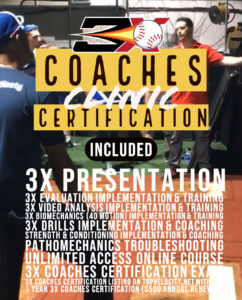 The 3X Pitching Certification equips coaches with the skills to design and implement effective training programs. Coaches are trained to conduct thorough assessments of each pitcher, identifying areas for improvement and setting specific, measurable goals. Based on these assessments, coaches can create a comprehensive training plan that includes strength and conditioning, skill-specific drills, flexibility exercises, and recovery protocols.
The 3X Pitching Certification equips coaches with the skills to design and implement effective training programs. Coaches are trained to conduct thorough assessments of each pitcher, identifying areas for improvement and setting specific, measurable goals. Based on these assessments, coaches can create a comprehensive training plan that includes strength and conditioning, skill-specific drills, flexibility exercises, and recovery protocols.
- Initial Assessment: The initial assessment involves evaluating the pitcher's physical condition, biomechanics, and pitching mechanics. This includes video analysis, motion capture, and biomechanical assessments to identify strengths and weaknesses. Coaches also consider the pitcher's injury history, training background, and personal goals.
- Goal Setting: Based on the initial assessment, coaches set specific, measurable, and achievable goals for the pitcher. These goals provide a clear roadmap for the training program and help track progress over time. Goals may include increasing pitch velocity, improving accuracy, enhancing strength, or reducing injury risk.
- Program Design: The training program is designed to address the identified needs and goals of the pitcher. This involves selecting the appropriate strength exercises, flexibility routines, skill-specific drills, and recovery protocols. The program is structured to ensure a balanced approach, focusing on all aspects of the pitcher's development.
- Implementation and Monitoring: Implementing the training program requires careful planning and regular monitoring. Coaches guide pitchers through each phase of the program, providing instruction and feedback. Progress is tracked through periodic assessments, allowing coaches to adjust the program as needed. Continuous monitoring ensures that the pitcher stays on track and achieves their goals.
Benefits of Individualized Training Programs
Individualized training programs offer numerous benefits, including:
- Enhanced Performance: By addressing specific needs and focusing on individual strengths, pitchers can achieve significant improvements in velocity, accuracy, and overall performance.
- Injury Prevention: Customized training programs incorporate exercises and protocols designed to reduce the risk of injury, ensuring that pitchers stay healthy and can compete at their best.
- Personalized Development: Each pitcher receives a training program tailored to their unique attributes, promoting balanced development and long-term success.
- Motivation and Engagement: Setting specific goals and tracking progress helps keep pitchers motivated and engaged in their training, leading to sustained effort and commitment.
In conclusion, programming for performance is a critical aspect of the 3X Pitching Certification. By emphasizing individualized training programs that cater to the unique needs of each player, coaches can help pitchers reach their full potential while minimizing the risk of injury. This comprehensive approach ensures that pitchers can achieve optimal performance and maintain their health and longevity in the sport.
Certification Process
Becoming certified in 3X Pitching involves a structured process designed to ensure that coaches are thoroughly trained and equipped to implement the program effectively. This comprehensive certification process is essential for maintaining the high standards and scientific rigor that define the foundations of 3X Pitching methodology. Here’s an overview of what aspiring coaches can expect:
Step 1: Initial Application and Screening
The journey to becoming a 3X Pitching Certified Coach begins with an initial application. Interested coaches should visit TopVelocity.net/cert and fill out the request form. This form initiates the interview process, where we evaluate if you are a fit for the TopVelocity organization. The screening process is designed to identify coaches who are passionate about biomechanics, committed to ongoing education, and dedicated to helping pitchers achieve their full potential.
Step 2: Online Courses
Upon successful completion of the initial screening, candidates will gain access to a series of online courses. These courses cover the fundamental principles of 3X Pitching, including biomechanics, strength training, flexibility, and injury prevention. The online format allows coaches to learn at their own pace, ensuring a deep understanding of the program’s core concepts.
Step 3: Practical Assessments
To ensure that coaches can apply what they’ve learned, the certification process includes practical assessments. These assessments involve analyzing pitchers’ mechanics, developing correction strategies, and implementing training programs. Coaches must demonstrate their proficiency in using tools such as video analysis, motion capture technology, and biomechanical assessments.
Step 4: Ongoing Support and Resources
Certification is just the beginning. Once certified, coaches receive ongoing support and access to a wealth of resources. This includes training videos, instructional guides, and a community of fellow 3X Pitching coaches. The continuous support ensures that certified coaches stay updated with the latest advancements in sports science and biomechanics.
Step 5: Continuous Education
TopVelocity emphasizes the importance of continuous education. Certified coaches are encouraged to participate in ongoing training sessions, webinars, and advanced workshops. This commitment to lifelong learning ensures that coaches maintain the highest standards of coaching excellence and stay at the forefront of pitching mechanics and performance training.
How to Get Started
 If you are passionate about enhancing pitchers' performance and reducing injury risks through scientifically backed methods, the 3X Pitching Certification could be the perfect fit for you. To begin the certification process:
If you are passionate about enhancing pitchers' performance and reducing injury risks through scientifically backed methods, the 3X Pitching Certification could be the perfect fit for you. To begin the certification process:
- Visit TopVelocity.net/cert: Go to our certification page and fill out the request form to start the screening process.
- Complete the Initial Screening: Participate in the interview process to determine your fit for the TopVelocity organization.
- Enroll in Online Courses: Gain access to the comprehensive online curriculum covering the principles of 3X Pitching.
- Pass Practical Assessments: Demonstrate your ability to implement the 3X Pitching methodology effectively.
- Receive Ongoing Support: Benefit from continuous support, resources, and community engagement as a certified 3X Pitching coach.
By becoming a 3X Pitching Certified Coach, you join a network of professionals dedicated to advancing the science of pitching and making a meaningful impact on the careers of pitchers at all levels. Take the first step today by visiting TopVelocity.net/cert and filling out the request form. We look forward to welcoming you to the TopVelocity family and helping you achieve coaching excellence.
Conclusion: Foundations of 3X Pitching
The 3X Pitching Certification is a game-changer for baseball coaches looking to enhance their players' performance and reduce injury risks. By mastering the principles of 3X Pitching, identifying and correcting mechanical issues, and implementing individualized training programs, coaches can make a profound impact on their players' careers. For coaches committed to excellence, the 3X Pitching Certification is an essential investment in their professional development and their players' success.


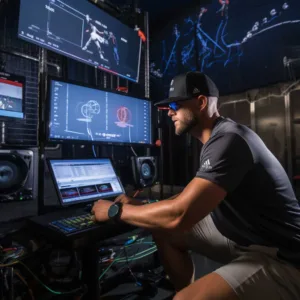 Video Analysis: Video analysis is one of the most effective tools for identifying mechanical issues. By recording a pitcher's motion from multiple angles, coaches can slow down the footage to closely examine each phase of the delivery. This allows for detailed observation of arm angles, counter movements, and lower body mechanics. Video analysis provides a visual aid that helps both coaches and pitchers understand the specific areas that need improvement.
Video Analysis: Video analysis is one of the most effective tools for identifying mechanical issues. By recording a pitcher's motion from multiple angles, coaches can slow down the footage to closely examine each phase of the delivery. This allows for detailed observation of arm angles, counter movements, and lower body mechanics. Video analysis provides a visual aid that helps both coaches and pitchers understand the specific areas that need improvement.
